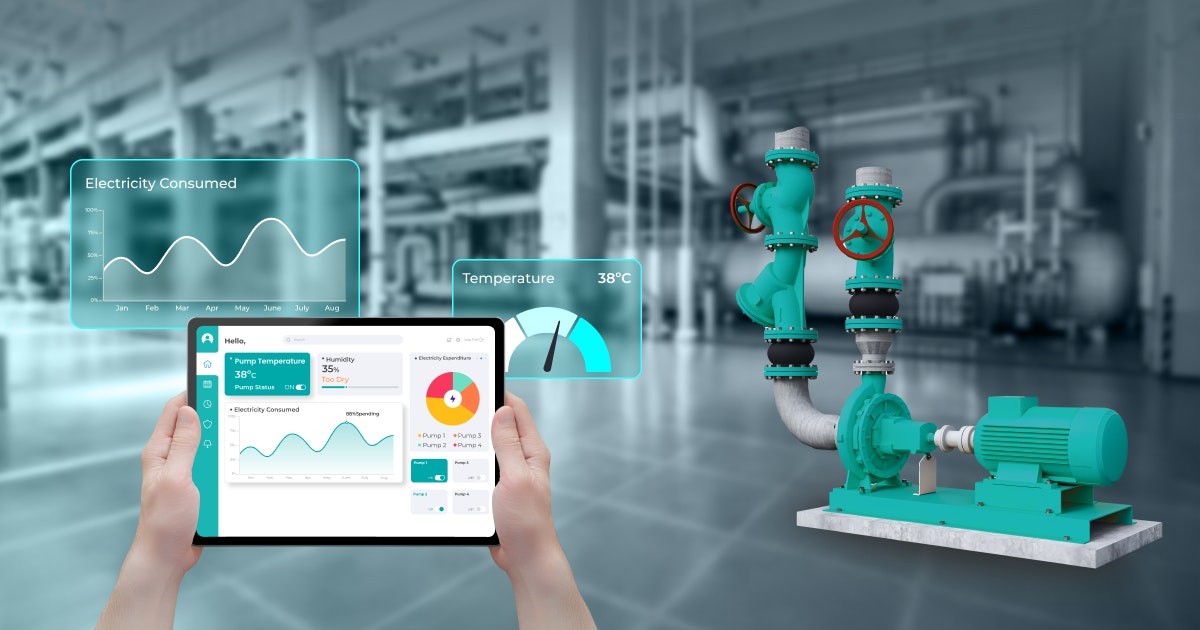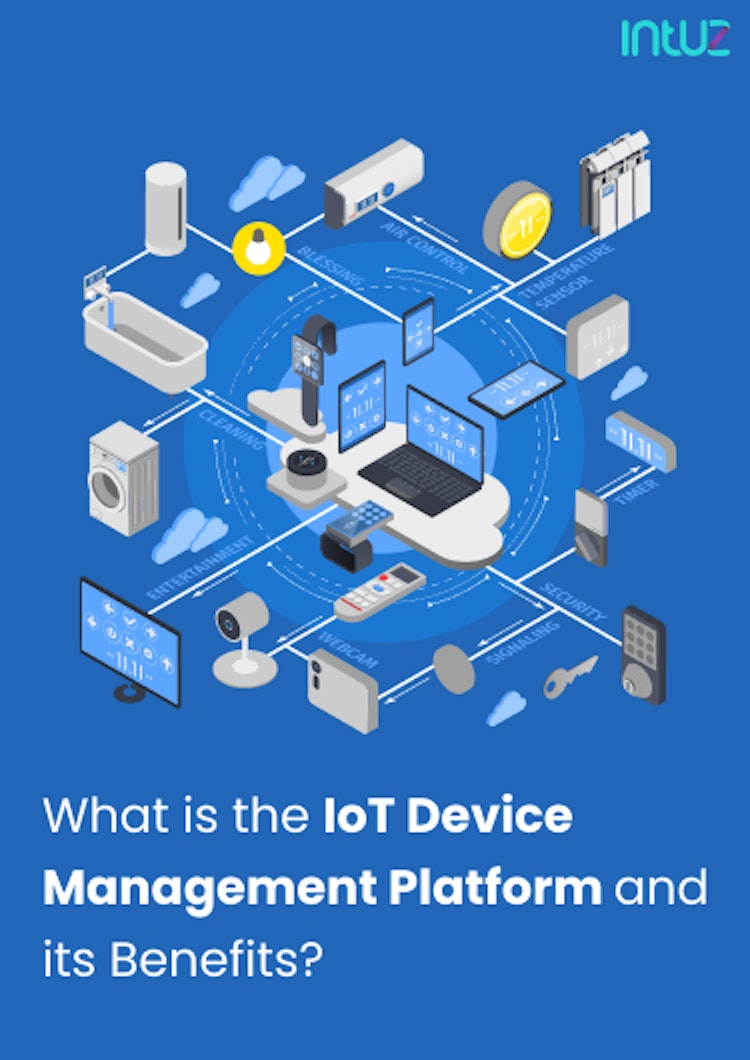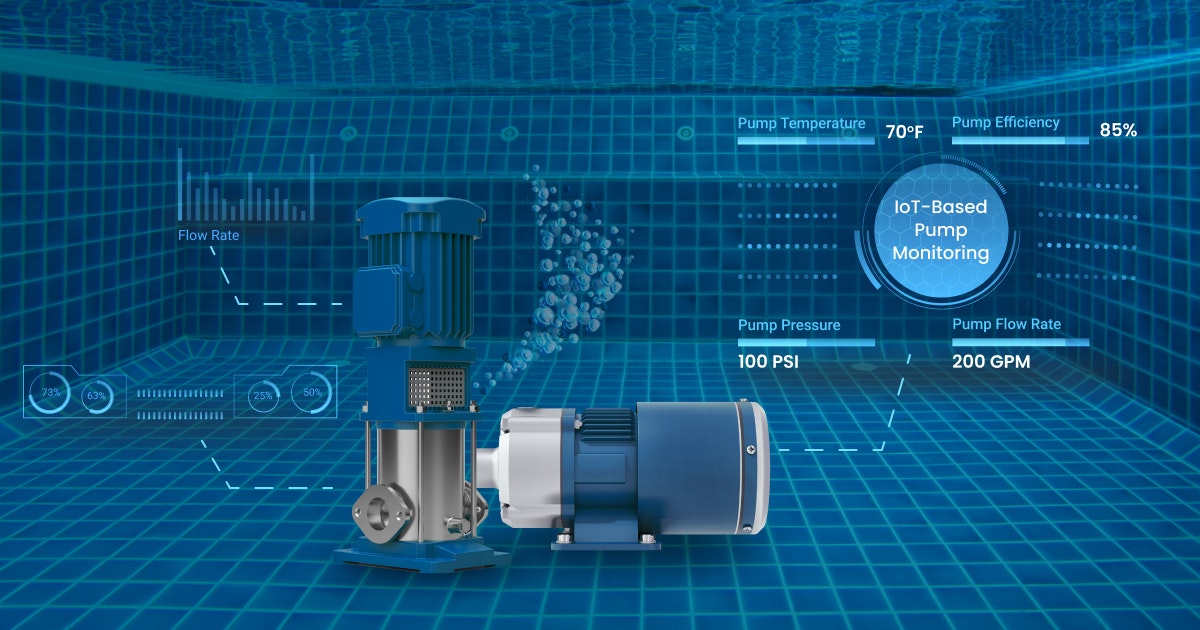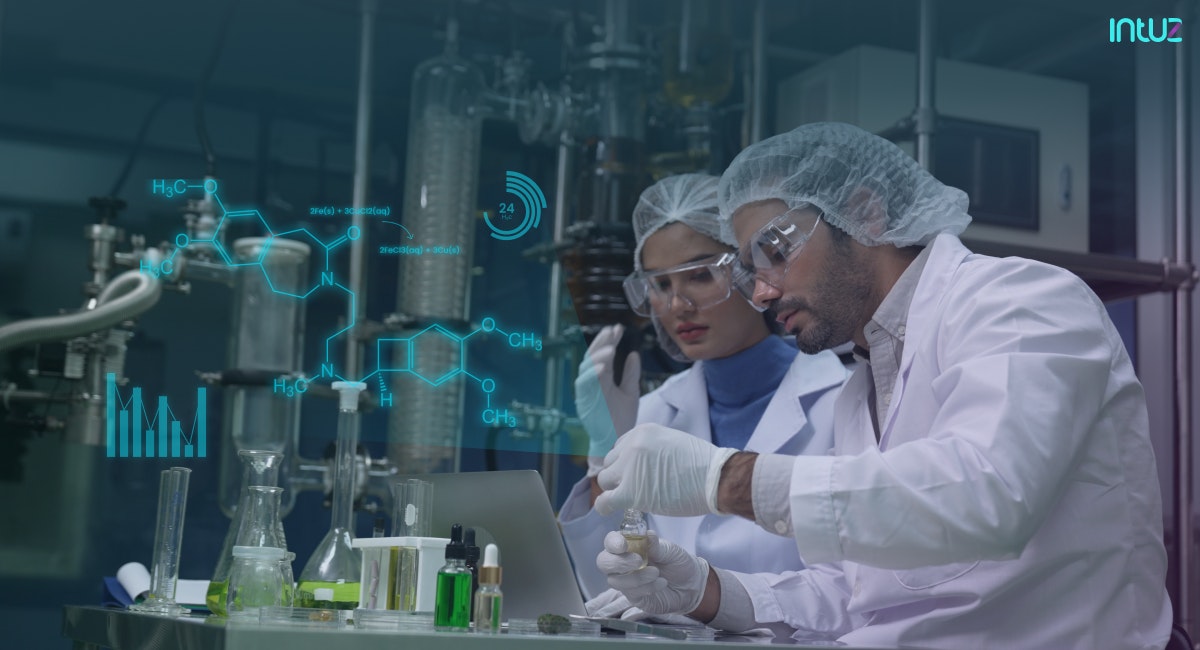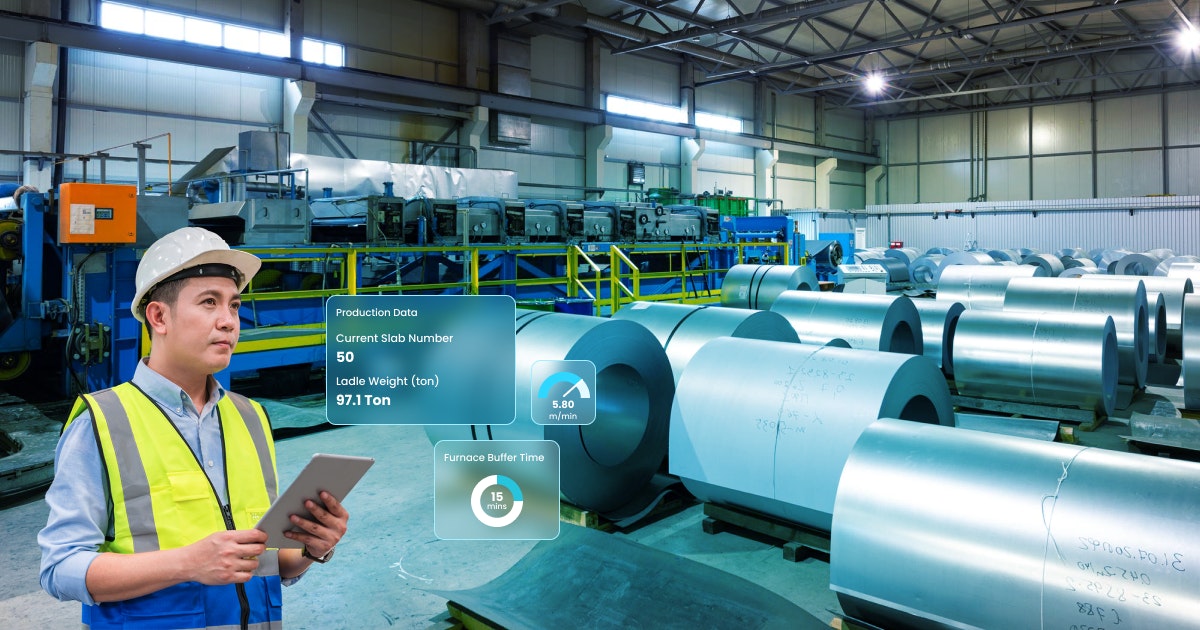Table of Content
Industrial cleaning processes employ specialized machinery and techniques to thoroughly cleanse and disinfect a wide range of industrial parts. These are typically used in manufacturing facilities, production plants, and other industrial settings where cleanliness and sanitation are critical to product quality, worker safety, and regulatory compliance.
Industrial washing involves multi-faceted techniques, such as spray washing, immersion washing, ultrasonic cleaning, and high-pressure cleaning, which can be automated or manual.
The process often involves the use of pumps, which move the cleaning solution through the washing system and ensure it reaches all parts of the components being cleaned. Industrial washing includes cleaning agents and chemicals, such as detergents, solvents, and disinfectants.
How does implementing the Internet of Things (IoT) help industrial washing processes?
Pumps used in industrial washing processes may be subject to wear and tear over time, impacting their performance and efficiency. By implementing an IoT-based water pump control system, you can track the performance of pumps in real time and identify issues before they become critical, reducing downtime and improving overall system reliability.
Moreover, IoT sensors can be programmed to initiate washing cycles automatically based on predetermined criteria such as load size, water temperature, and detergent levels. This automation reduces the need for manual labor, freeing you up to focus on other tasks.
In this article, we will explore IoT-based pump monitoring systems in different industries, their benefits, and the factors to consider when optimizing pump monitoring systems with IoT.
Revolutionize Your Industrial Washing with IoT Pump Monitoring!
Explore SolutionsIndustry-specific applications of the IoT-based pump monitoring system
IoT-enabled pump monitoring has numerous applications globally, with the potential to revolutionize conventional data collection into intelligent pumps for industrial washing in various industries, including:
1. Food and beverage
By monitoring pumps in real-time and analyzing the data collected with IoT, you can improve the efficiency and reliability of your production processes while also ensuring compliance with safety and regulatory standards.
2. Pharmaceutical
Leverage IoT technology to make sure that the finished products are of high quality and meet all necessary safety and regulatory standards while improving operational efficiency and increasing profitability for your pharmaceutical company.
3. Agriculture
The IoT-based smart irrigation system enables real-time tracking and management of water usage, reducing waste and increasing efficiency. IoT can also detect and alert farmers to issues like leaks or pump malfunctions, resulting in improved crop yields and reduced costs.
4. Automotive
Get help in predicting and preventing potential malfunctions in-vehicle systems, such as fuel, oil, or coolant systems. IoT-based pump remote monitoring solutions monitor and control vehicles remotely, improving fleet management efficiency.
5. Healthcare
Track patients’ vital signs, medication delivery, and fluid intake in real time. IoT can also improve medication adherence and reduce errors by automating medication dispensing and providing alerts for missed doses.
6. Textiles
Optimize dyeing and finishing processes, improve production efficiency, and reduce resource waste with the help of an IoT-based pump automation system. Control variables such as temperature, pressure, and chemical dosing to ensure consistent and high-quality product outcomes.
7. Mining
Enjoy real-time tracking and management of water usage and reduce waste with IoT. Enable remote monitoring and control of pumping systems, improve worker safety, and minimize equipment downtime. Additionally, IoT-based pump monitoring can aid in identifying potential system failures.
Advantages of IoT-based pump monitoring in industrial washing processes
The technology provides real-time alerts to pump operators, enabling prompt corrective action when the pump reaches critical operating points. Let us take a look at the five advantages of IoT-based pump monitoring for industrial washing systems:
1. Cost savings
IoT sensors provide real-time data on pump performance, allowing operators to optimize pump usage and reduce energy costs. They can also detect early pump failure signs, reducing downtime and repair costs.
2. Higher efficiency
IoT-based remote pump control enables you to manage and adjust pump settings from anywhere, resulting in more efficient water usage and reducing the risk of water waste, resulting in cost savings and improved sustainability.
3. Improved safety and security
IoT sensors can detect potential safety hazards, such as leaks or overpressure, and trigger alerts to maintenance personnel to address the issue immediately. Such IoT-based pump maintenance systems help prevent accidents and injuries, ensuring a safer work environment.
4. Better water management practices
Track water usage in real-time using IoT to enable operators to optimize water usage and identify opportunities for conservation. Make cost savings and improved sustainability efforts the norm with IoT-based pump monitoring.
5. Improved reliability and maintenance
Identify early signs of pump failure to schedule maintenance before a breakdown occurs. This ensures that industrial washing processes operate efficiently and effectively without causing operational hiccups or adding to maintenance costs.
Consumer IoT Solution for Pool Equipments Controlling & Automation
View Case StudyFactors to consider when optimizing a pump monitoring system with IoT technology
Industrial pump monitoring is a complex task, as unforeseen events like power outages or changes in fluid transfer can lead to pump failure during critical times. That is why it is necessary to keep an eye out for four key factors while optimizing a pump monitoring system with IoT:
1. Potential risks
This process is not free from risks like data security threats and hardware malfunctions. IoT systems can be vulnerable to cyberattacks, compromising the security and integrity of the data collected from the sensors.
It is, therefore, vital to implement appropriate security measures, such as encryption and user-specific access controls, to mitigate these risks. IoT-based pump fault detection uses advanced algorithms and sensor data to identify potential issues, allowing for proactive maintenance and reducing the risk of equipment failure.
2. Pump conditions
Pump conditions such as flow, vibration, power, and temperature are essential parameters to monitor to optimize pump performance. Make sure the chosen IoT sensors are accurate and reliable and can provide real-time data on pump conditions.
IoT-based pump efficiency optimization leverages data analytics and smart sensors to fine-tune pump performance, resulting in energy savings and improved overall system reliability.
3. Data analytics and ML tools
Finally, data analytics and ML tools can provide insights into pump performance, efficiency, and maintenance needs. It’s crucial to choose analytics and machine learning tools that are appropriate for the data generated by the sensors and can provide actionable insights for improving pump performance and reducing downtime.
It is also essential to ensure that the analytics and ML tools are integrated with the IoT system to provide real-time feedback and alerts based on sensor data.
4. Connectivity and communication options
This crucial element facilitates transmitting data from the sensors to a cloud-based platform or digital twin. Therefore, choose reliable communication protocols that can handle the volume of data generated by IoT sensors. Consider the bandwidth requirements and latency of the communication protocol to ensure timely and accurate data transmission.
How to implement an IoT-based system for pump monitoring in industrial washing processes
Remote pump monitoring is a sophisticated and wireless IoT-powered technology that enables continuous monitoring of pump systems without the need for physical presence.
It involves the use of smart devices such as sensors and data trackers to prevent equipment failure and extend the pump’s lifespan. Here is how you can implement the technology in your industrial washing processes:
1. Identify pump parameters
Parameters such as flow rate, vibration, power consumption, and temperature help understand the performance and efficiency of the pump system, providing early warning signs for potential issues or breakdowns.
2. Select appropriate sensors
Once the parameters have been identified, the next step is to select sensors that can accurately measure them. Different types of sensors are available for measuring different parameters, such as flow, vibration, power meters, and temperature sensors.
When selecting sensors, consider factors such as accuracy, reliability, and compatibility with the IoT device that will be used to collect and transmit data.
3. Choose an IoT device
The IoT device is an important component of an IoT-based water level monitoring system, which should be able to connect the sensors to the cloud or a wireless communication system to collect data from the sensors in real time.
Different types of IoT devices are available, such as gateways, routers, and edge devices. It is vital to choose a device compatible with the selected sensors that can meet the requirements of the pump monitoring application.
4. Configure the IoT device
Once the IoT device has been selected, it must be configured to collect real-time sensor data and share alerts and notifications based on sensor readings.
This can be done using software tools provided by the device manufacturer or by developing custom software that integrates with the device. The alerts and notifications can be set up to trigger when a parameter exceeds a certain threshold, indicating a problem in the pump system.
5. Access and visualize sensor data
Once the IoT device is configured and collecting data from the sensors, the next step is to set up a platform that can be used to access and visualize the sensor data in real-time. This can include cloud-based platforms such as AWS, Azure, and Google Cloud or on-premises platforms installed on a local server.
The platform should be able to provide a graphical representation of the pump parameters, making it easy to identify trends and patterns. Here, ensuring the platform offers access control to different users is essential.
6. Use data analytics and ML tools
Finally, once the sensor data has been collected and visualized, data analytics and ML tools can be used to analyze the data and provide insights into pump performance, efficiency, and maintenance needs.
This includes using algorithms to detect anomalies, predicting pump failures based on historical data, and identifying opportunities to optimize pump performance. The insights gained from this step are used to improve the reliability and efficiency of the pump system and save costs.
Benefits achieved with an IoT-based pump monitoring system
A key advantage of such a system is that there is no need for constant on-site monitoring of pump operating conditions, thereby eliminating the need for operators to travel to remote locations. What's more, one can also avail of the following benefits thanks to an IoT-based water pump monitoring system:
1. Improved efficiency
IoT systems can track the usage and performance of each pump, enabling you to optimize pump operation and improve efficiency. Adjusting flow rates or optimizing pump scheduling reduces energy costs and saves money. Additionally, IoT systems can identify potential issues impacting pump efficiency by monitoring pump conditions such as flow rate, vibration, and temperature, allowing you to take corrective action.
2. Enhanced visibility
IoT systems provide real-time data on pump performance and can enable remote operations monitoring. This equips you to identify potential issues before they occur. In addition, by visualizing the data collected by the IoT system, you can better understand how the washing process is performing and adjust it accordingly.
3. Predictive maintenance
IoT systems can use ML algorithms to analyze sensor data and predict potential equipment failures. By identifying issues before they occur, you can perform maintenance proactively rather than reactively, reducing downtime, increasing reliability, and saving money on repair costs. Predicative maintenance can also extend the equipment's lifespan, minimizing the need for costly replacements and ensuring that the washing process is operating at maximum efficiency.
4. Early detection of issues
By installing IoT sensors on pumps in an industrial washing process, you can monitor their condition in real time and detect issues before they become critical. For example, if a pump is experiencing excessive vibration or overheating, the IoT system can send an alert to operators, who can take action to prevent the pump from failing. This minimizes downtime and prevents damage to equipment, ultimately saving you lots of time and money.
Monitor & Control Your Pumps With IoT-based Pump Monitoring Solution Development!
Explore NowOver to you
IoT-based technology empowers you to monitor the conditions of your industrial equipment, retrieve pump runtime and flow reports, and verify the status of individual devices. Moreover, such pump monitoring systems automatically record data, allowing you to analyze trends and enhance system-wide performance.
The good news is that our pump monitoring app development focuses on creating user-friendly applications that facilitate real-time tracking of pump performance, health, and operational data.
Book a Free 45-minute Consultation with Our IoT Experts Today! Get a customized roadmap and strategies to Implement IoT pump monitoring for your industrial washers.
